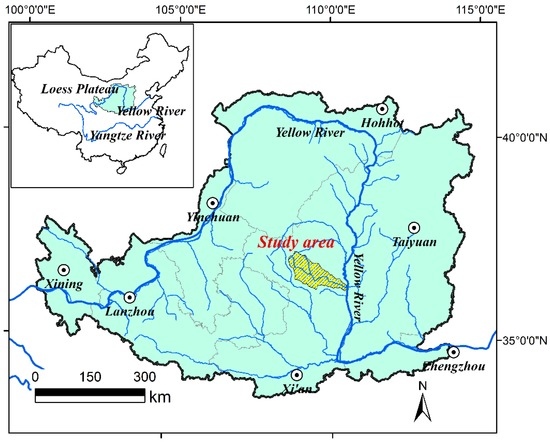1
Institute of Soil and Water Conservation, Northwest A & F University, 26 Xinong Road, Yangling, Shaanxi 712100, China
2
School of Physical, Environmental and Mathematical Sciences, University of New South Wales Canberra, P.O. Box 7916, Canberra BC, ACT 2610, Australia
*
Author to whom correspondence should be addressed.
Academic Editors: M. Altaf Arain and Timothy A. Martin
Received: 29 July 2016 / Revised: 15 October 2016 / Accepted: 25 October 2016 / Published: 31 October 2016
Abstract
Planting trees on the right sites is the first principle in silviculture, but it is not easy to apply at a large scale, especially in complex terrain such as mountainous regions. In hilly and gully landscapes of China’s Loess Plateau, the environmental heterogeneity is so great that it is very difficult to choose the right sites for planting trees. The long history of vegetation destruction makes it difficult to have a reference for restoration programs. In this paper, we compared the distribution of actual forest to an existing potential natural vegetation (PNV) map to see the mismatch with the sites. The differences in environmental conditions between natural forest and mismatched planted forest were investigated. The results showed that significant differences existed in the environmental conditions between them. The mean rainfall and temperature for natural forest were 512.20 ± 11.42 mm and 8.23 ± 0.55 °C, respectively, but 497.96 ± 14.92 mm and 8.72 ± 0.97 °C, respectively, for the mismatched planted forest. Evaporation was not only different in range (816–953 mm vs. 816–1023 mm), but also significantly different in mean values (888.31 ± 14.35 mm natural forest vs. 895.90 ± 30.55 mm planted forest). The slope gradient of natural forest and mismatched planted forest was also significantly different (22.66° ± 8.82° vs. 24.24° ± 9.86°). The results identified that 58% of the existing forest in the Yanhe River catchment is planted forest that grows on steeper slopes, receives lower rainfall, has higher temperatures and higher evaporation. The average soil water content for sites with planted forest was found to be 5.98% ± 0.32% compared to 7.52% ± 0.33% for natural forest. We conclude that the main cause of dwarfed, slender, low productive and sparse planted forest in the Loess Plateau is planting trees at unsuitable sites. Our results highlight the importance of matching sites with the best potential vegetation types. Instead of using water harvesting techniques, we suggest that more focus should be placed on understanding environmental heterogeneity and its capacity to support particular vegetation types. This study is instructive for vegetation restoration planning and existing planted forest management in the future. View Full-Text
Keywords: Loess Plateau; planted forest; potential natural vegetation; environmental heterogeneity; ecological management
▼ Figures
This is an open access article distributed under the Creative Commons Attribution License which permits unrestricted use, distribution, and reproduction in any medium, provided the original work is properly cited. (CC BY 4.0).
For further details log on website :
http://www.mdpi.com/1999-4907/7/11/258?utm_source=TrendMD&utm_medium=cpc&utm_campaign=Forests_TrendMD_0






No comments:
Post a Comment